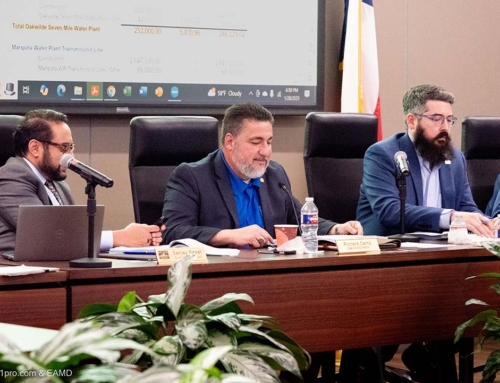The foundations of the Texas economy — especially in the Houston region — lie deep underground.
Houston-based oil and natural gas industries with a global reach help drive local prosperity, and drilling will be critical to the growing geothermal power and carbon capture storage sectors.
So, for one Norwegian company that makes fittings for ultra-deep wells, East Aldine became the logical place to base its Western Hemisphere operations.
 Ace Well Technology began with a deceptively simple but revolutionary product: a “collar” that locks in place around the pipes that go into wells, firmly attaching accessories and holding them steady.
Ace Well Technology began with a deceptively simple but revolutionary product: a “collar” that locks in place around the pipes that go into wells, firmly attaching accessories and holding them steady.
“We’re able to take, in what is known as close-tolerance wells, a tool that is typically custom-made to hold onto the pipe and turn it into something that is more of a high-performance commodity, if you will,” said Mike Moffitt, vice president Western Hemisphere for the company.
When a hole is bored through soil and rock, a steel pipe is inserted to stabilize it and keep whatever will flow through the pipe from entering the surrounding ground or water table.
A second, smaller pipe is inserted into that one for two-way movement of liquids, with drilling mud or pressurized water forced through the smaller pipe and drilling debris or product returning through the space between the pipes.
Ace’s collars were first used to hold in place the spacers needed to keep pipes centered.
 “You have either drill pipe or casing being put into the existing well-bore, whatever they pump down the existing pipe, the return flow comes up the outside of the pipe,” Moffitt said.
“You have either drill pipe or casing being put into the existing well-bore, whatever they pump down the existing pipe, the return flow comes up the outside of the pipe,” Moffitt said.
“Typically in these close tolerance wells, whenever they need to put something on the pipe, they actually have to take a piece of steel that’s similar to the pipe and they have to basically whittle it down and make different profiles on it and then attach the tools to the steel and then put the steel tube in the pipe by basically connecting it with the different connections.”
The Ace Ratchet Collar allows for faster, cheaper installation — important considerations in drilling.
The company and its technology are fairly new, having been founded in Norway in 2012. When it expanded to the Americas in 2016, Houston was the logical place to locate.
Moffitt said the company first located in Norway House, a business incubator operated within the Norwegian consulate near Allen Parkway in downtown Houston.
The following year, the company moved to its current location near the North Sam Houston Parkway in the East Aldine Management District. The facility serves customers from Uruguay to Alaska, supplying projects throughout the Americas.
“We’re more of a sales office than anything,” but also close to shipping and logistics companies that Ace works with, Moffitt said.
“Halliburton’s there as well, and they’re our biggest customer. Just having that access to downtown — 20 minutes to downtown — and we’re about maybe 30 or 35 minutes away from the Energy Corridor. Talk about it — it’s a great location,” he said. And, of course, “It’s tremendously close to the (Bush Intercontinental) airport.”
The company has expanded its product line to include splice clamps, and is working on a system to help automate more of the drilling process, helping to protect workers from potentially hazardous conditions. This safety aspect is especially important with new projects the company is taking on in ultra-deepwater offshore drilling off the coast of South America.
“We’ve recently won tenders for big completion projects in Brazil in the Buzios and the Mero fields and the Bacalhau (field),” Moffitt said.
Also, he said, “We’ve just done our first field trial in the North Sea of an automated control line running system, so we’ve basically used our tools to remove people out of the dangerous area there, called the red zone, and we’re able to use our tools to automate that process.”
Ace Well Technology is also entering the alternative energy field, using advanced alloys to make products that can withstand the heat of producing geothermal energy. The company is also adapting products for use with carbon capture and storage, which will inject carbon dioxide deep into the earth to keep it out of the atmosphere.
— By Mark Fleming







